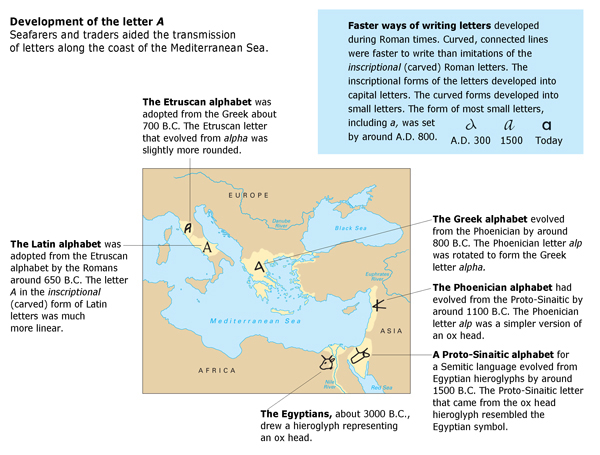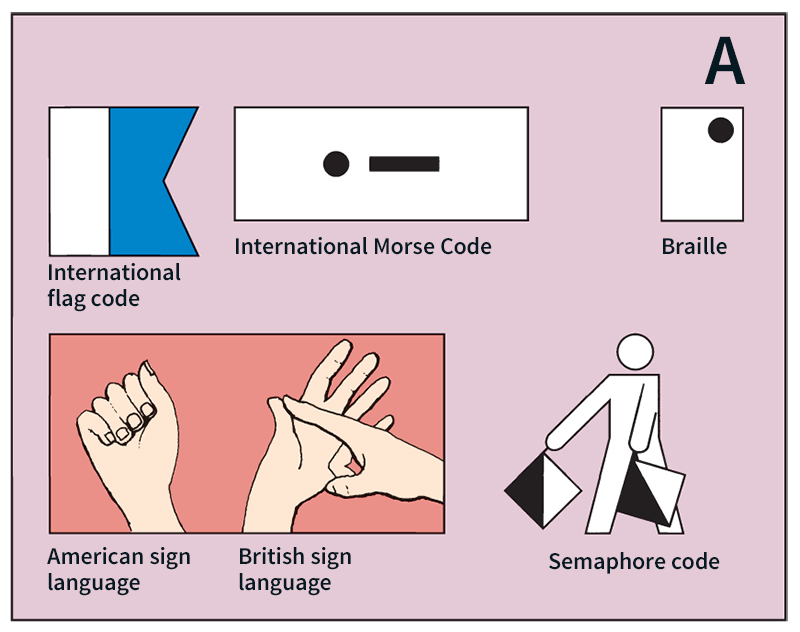A is the first letter of the alphabet used for the modern English language. It is also used in a number of other languages, including French, German, and Spanish.

The letter A is the first of the English vowel letters (see Vowel). The letter can be pronounced in different ways. The sound of long A can be heard in the word fate and the sound of short A in cat. See Pronunciation .
Scholars believe the letter A evolved from an Egyptian hieroglyph (pictorial symbol) that represented an ox head. Hieroglyphs were adapted to be used for a Semitic language by around 1500 B.C. The alphabet for this Semitic language—the earliest known alphabet—is called Proto-Sinaitic. By 1100 B.C., an alphabet for another Semitic language, Phoenician, had evolved from Proto-Sinaitic. See Semitic languages .
The Phoenician letter that can be traced to the Egyptian ox-head hieroglyph is the first letter of the Phoenician alphabet, alp. The Phoenicians used the letter to represent the beginning sound of alp, which was their word for ox. Language scholars call the alp sound a glottal stop. This sound is heard in the middle of the phrase “Uh-oh,” but it is not used in actual English words. This sound was not used by the ancient Greeks either. When the Greeks adapted the Phoenician alphabet around 800 B.C., they changed alp to alpha and used the letter for the ah sound at the beginning of the word alpha. The letter kept that sound when it was adopted by the Etruscans starting about 700 B.C. and by the Romans by around 650 B.C.

See also Alphabet .
